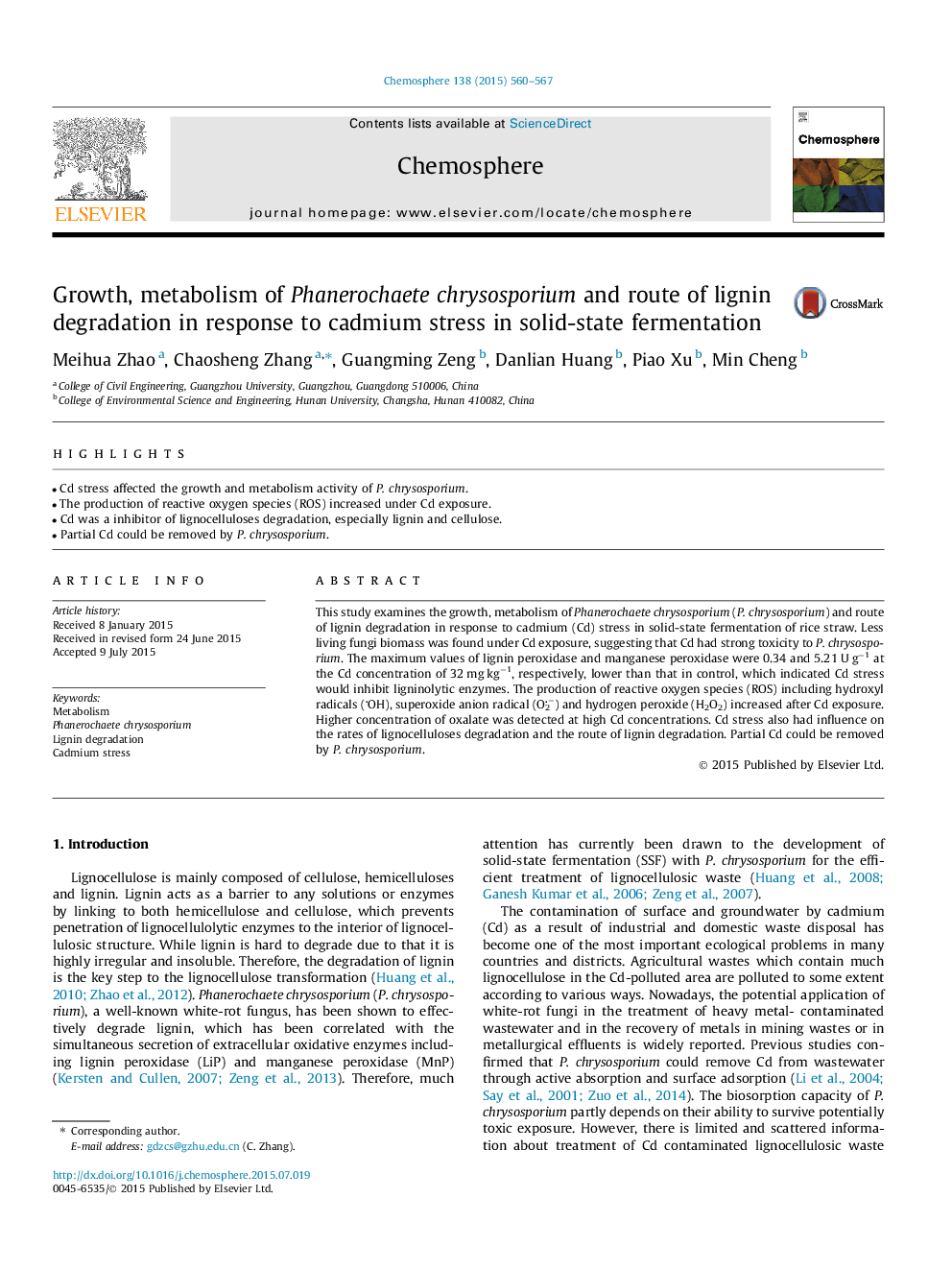| Article ID | Journal | Published Year | Pages | File Type |
|---|---|---|---|---|
| 6307535 | Chemosphere | 2015 | 8 Pages |
Abstract
This study examines the growth, metabolism of Phanerochaete chrysosporium (P. chrysosporium) and route of lignin degradation in response to cadmium (Cd) stress in solid-state fermentation of rice straw. Less living fungi biomass was found under Cd exposure, suggesting that Cd had strong toxicity to P. chrysosporium. The maximum values of lignin peroxidase and manganese peroxidase were 0.34 and 5.21 U gâ1 at the Cd concentration of 32 mg kgâ1, respectively, lower than that in control, which indicated Cd stress would inhibit ligninolytic enzymes. The production of reactive oxygen species (ROS) including hydroxyl radicals (OH), superoxide anion radical (O2â) and hydrogen peroxide (H2O2) increased after Cd exposure. Higher concentration of oxalate was detected at high Cd concentrations. Cd stress also had influence on the rates of lignocelluloses degradation and the route of lignin degradation. Partial Cd could be removed by P. chrysosporium.
Related Topics
Life Sciences
Environmental Science
Environmental Chemistry
Authors
Meihua Zhao, Chaosheng Zhang, Guangming Zeng, Danlian Huang, Piao Xu, Min Cheng,
